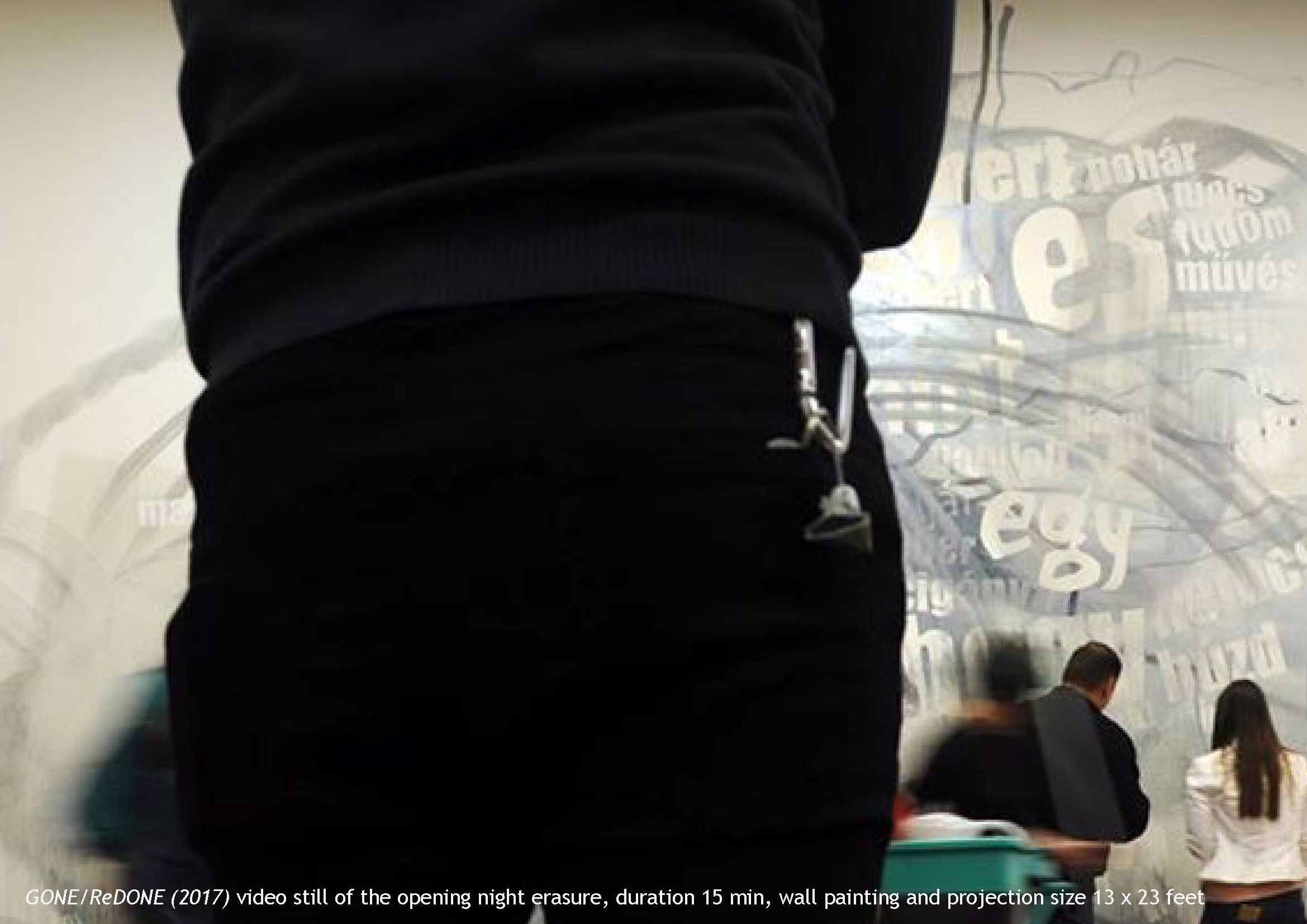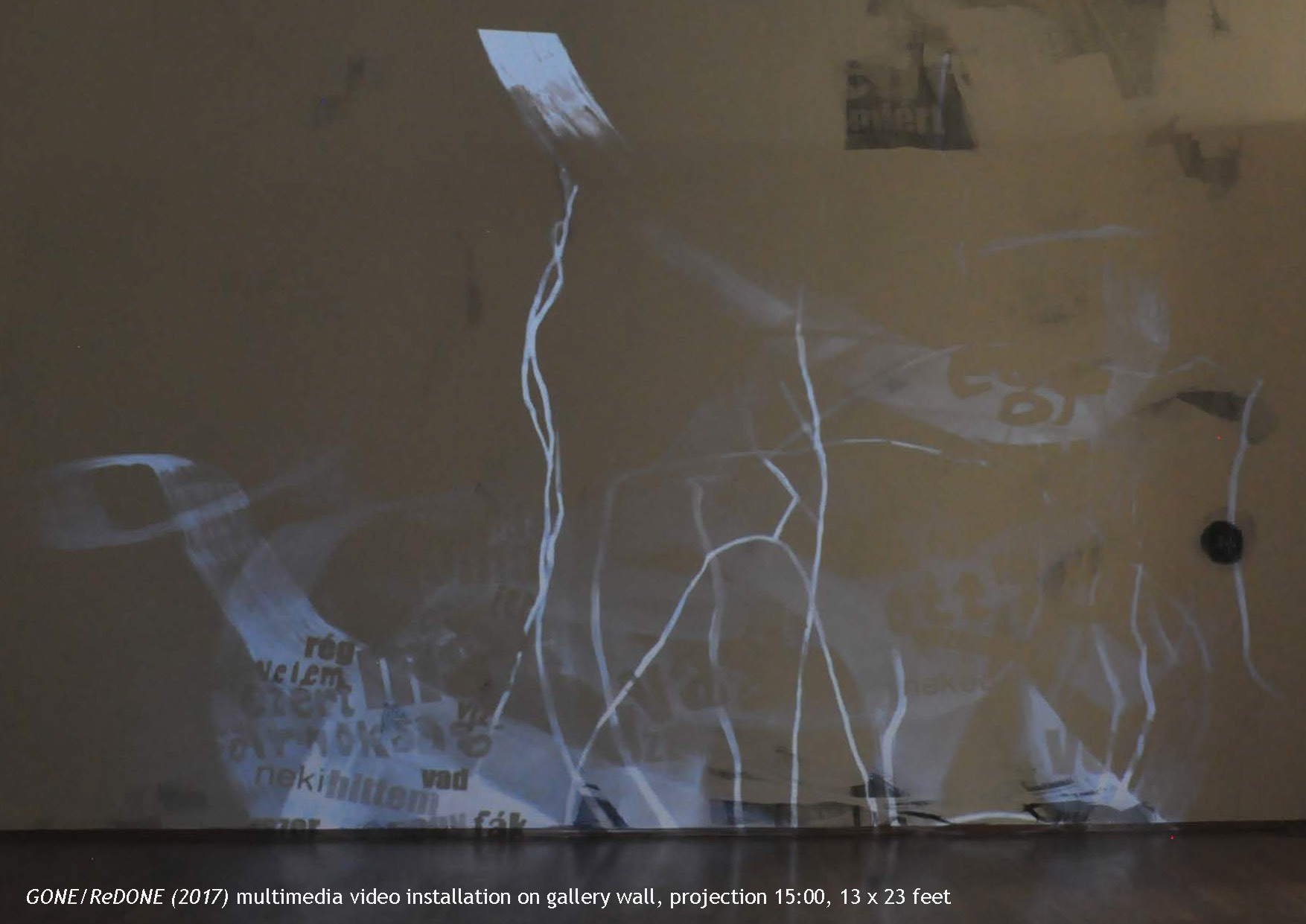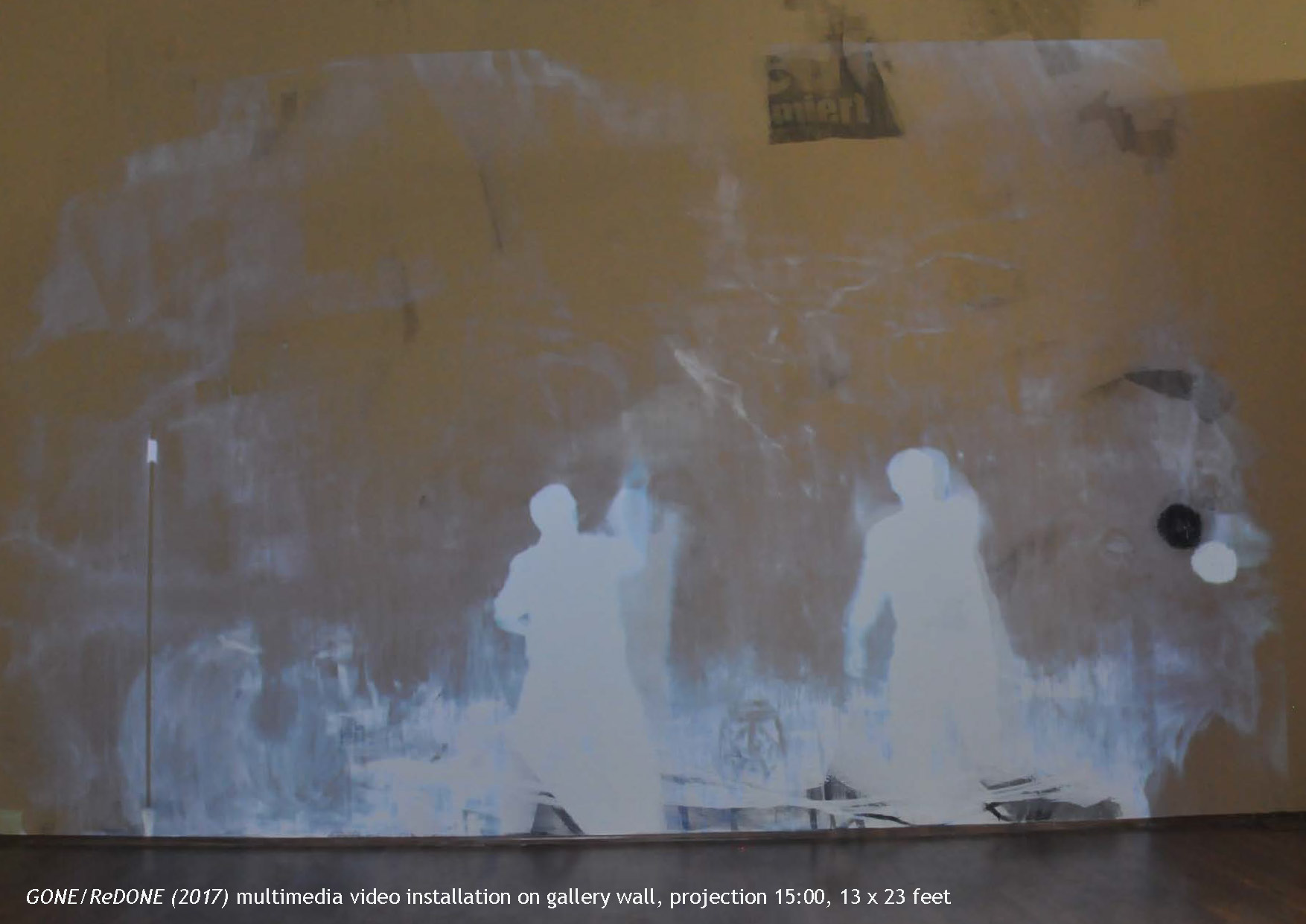GONE/ReDONE 2017
Can frescos be contemporary?
MODEM, Modern and Contemporary Art Museum of Debrecen, Hungary
Material presence emphasized… then taken away… replaced by the digital self.
GONE/ReDONE is a conceptual mixed media installation that changes over time from physical to digital through the act of erasure.
A large-scale wall painting is made for the audience to erase during the opening night. The entire process – the making as well as the undoing of the painting – is documented. For the remainder of the exhibition this animated documentation is projected back on the gallery wall at its original scale, not to provide proof of its existence but act as a mirror of our digitally inflected historical mind.
The tangibility of this process (washing off, rubbing away, and getting-rid-of labor) are dirty and physically involved acts but is exhibited through the pristine virtual lens of digital media. What happens when the embodiment of physicality is replaced with its digital representation? The narrative of the painting becomes the transformation of the wall painting itself.
The transformation happens fast. The painting disappears in a few hours. Standing in front of its absence in large scale is a self reflecting moment. Then the projection turns on. Perhaps a reaction to the material and technological sublime… parallel to the experience of standing in front of the virtually restored Rothko Harvard Murals at the Harvard Museum. When Rothko’s color-restoring projectors are turned off at the end of each day and visitors stand around for the moment of disappearance. I’m interested in the dialogue that challenges this disembodiment. The contemporary wall painting is a witness of losing its materiality and gaining not only its virtuality but the virtual gaze of the observer. Therefore, it’s not only the material that changes but our perception along with it.
The composition explores the most frequently used words from the "top 30 most beautiful poems" in Hungarian literature. The arrangement of the words on the wall create a word cloud emphasizing their frequency based on an algorithm. This materializes not only the computer and human relationship to language but its dynamics between legibility and illegibility.



|